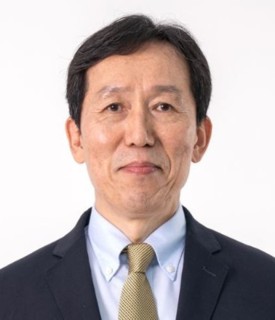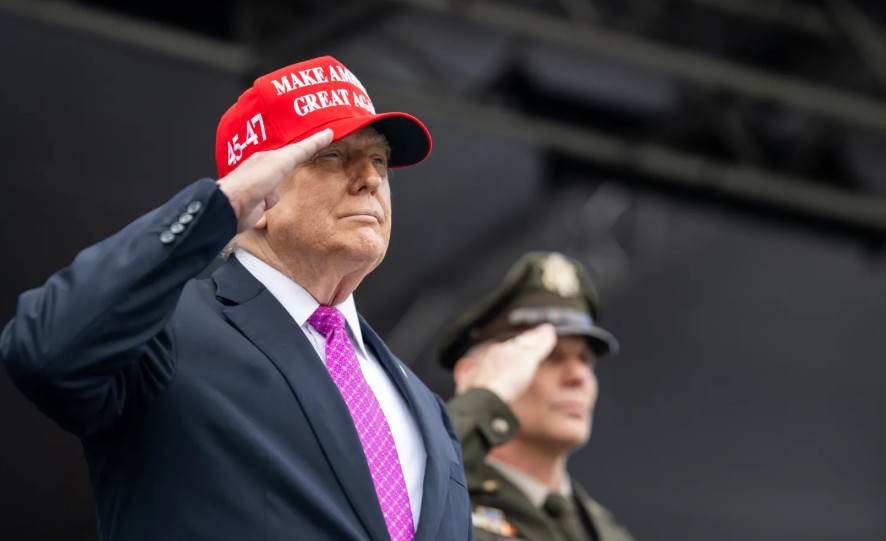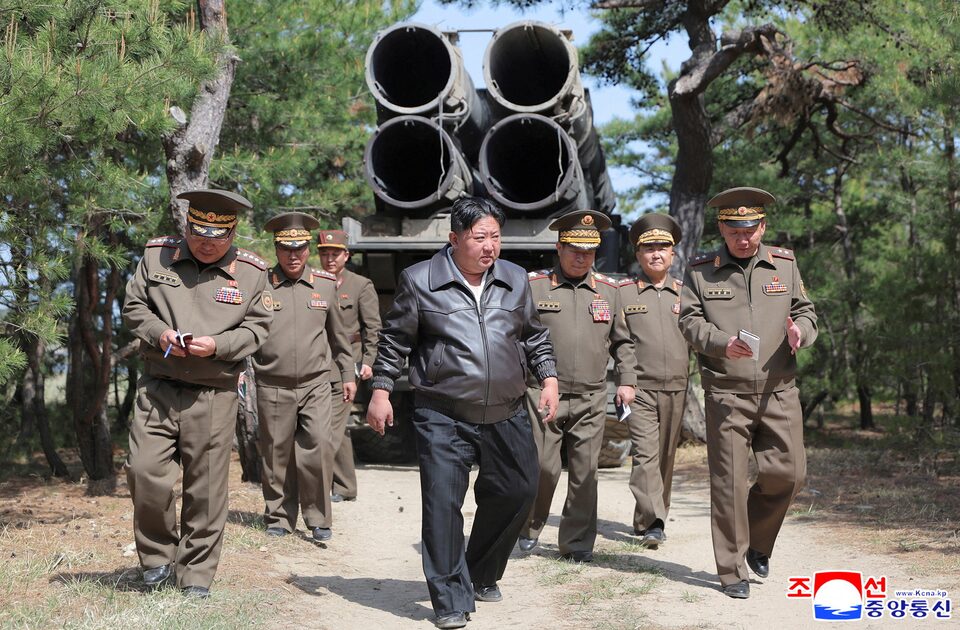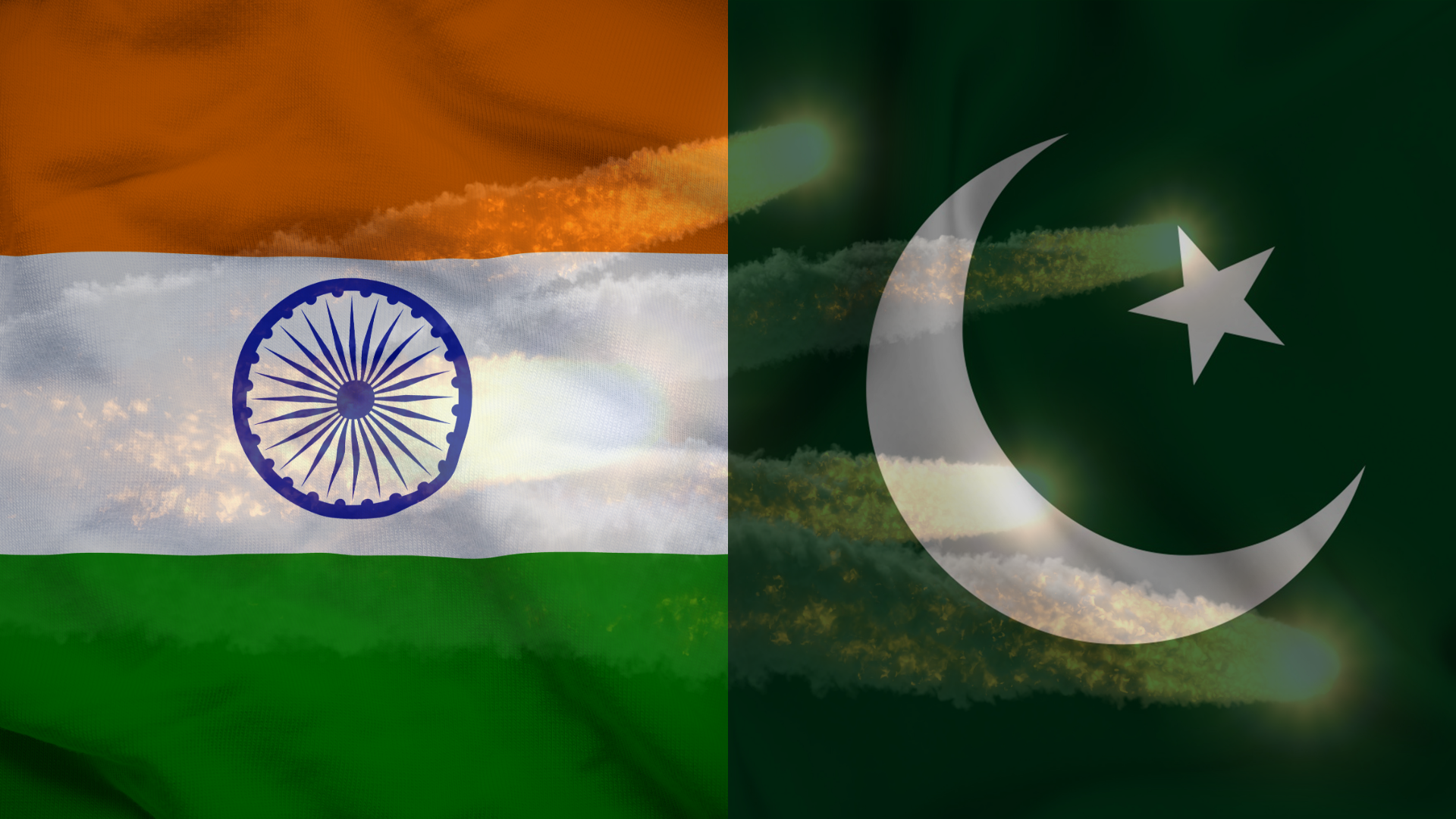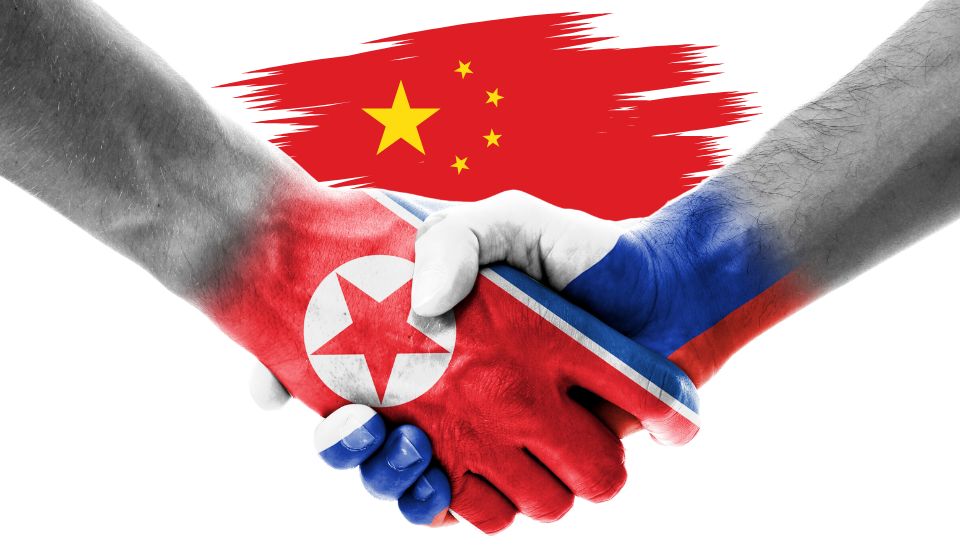■ See Korean Version on EAI Website
I. Rising Public Support for Nuclear Armament in South Korea
A consistent trend in public opinion over recent years reveals that close to 70 percent of South Koreans endorse the acquisition of an independent nuclear deterrent. This level of support is particularly striking when contrasted with public sentiment in neighboring Japan, where support for nuclear armament remains below 20 percent. In one survey conducted by the Asan Institute for Policy Studies in May 2022, 63.6 percent of respondents expressed support for nuclear armament even in the face of potential sanctions. Such findings suggest that public backing for South Korea’s independent nuclear capability is both substantial and enduring (Asan Institute for Policy Studies 2022).
South Koreans are generally believed to support nuclear armament primarily due to the security threat posed by North Korea. The belief that only nuclear weapons can effectively deter other nuclear weapons, coupled with growing skepticism about the reliability of the U.S. nuclear umbrella, underpins much of the security-driven rationale behind domestic calls for nuclear armament. However, public support for nuclear armament in South Korea appears to stem from a more complex set of motivations. According to the aforementioned Asan Institute survey, 32.1 percent of respondents cited “responding to the North Korean nuclear threat” as their primary reason. At the same time, 33.7 percent selected “establishing nuclear sovereignty as an independent state,” and 33.4 percent chose “enhancing South Korea’s influence in the international community as a nuclear-armed state.”
These figures suggest that among the three principal motivations for nuclear armament—security, sovereignty, and prestige—the South Korean public places particular emphasis on prestige. Since the indefinite extension of the Nuclear Non-Proliferation Treaty (NPT) in 1995, international civil society has increasingly regarded nuclear weapons in a deeply negative light, highlighting their indiscriminate lethality, potential for mass destruction, and irreversible environmental consequences. Within this post-Cold War context, nuclear weapons have come to be viewed as antithetical to peace, humanity, and ecological sustainability. In contrast to this global trend, however, anti-nuclear sentiment has failed to gain significant traction within South Korea.
Why do South Koreans support nuclear armament? In fact, public interest in and support for nuclear weapons in South Korea predates North Korea’s nuclear era. As a medium-sized power geographically encircled by great powers, South Korea occupies a structurally constrained position as a “sandwiched state.” The Korean Peninsula’s division, a product of postwar great power politics, has left South Korea perpetually navigating the strategic ambitions of regional hegemons alongside the persistent security challenge presented by North Korea.
In the Cold War context, South Korea allied itself with the United States, a nuclear-armed hegemon, as a means of securing its national survival. This decision, shaped by both strategic imperatives and political judgment, led Seoul to rely on extended deterrence rather than seek its own nuclear arsenal, a choice later institutionalized through its adherence to the NPT. This security framework afforded South Korea the strategic latitude to prioritize political consolidation and economic development under the protective umbrella of extended deterrence, ultimately facilitating its rise as a globally recognized middle power in the post-Cold War period. A historical track record as a small and ultimately constrained state has birthed a prevailing national aspiration to attain “great power” status; such sentiment is visible in public opinion polls on the motivations behind the support for nuclear armament.
In the case of North Korea, the collapse of its traditional patrons in the communist bloc during the post-Cold War period, combined with escalating internal security challenges and regime instability, appears to have driven its decision to pursue nuclear weapons as a strategy of self-preservation. By the late 2010s, North Korea had successfully developed a functional nuclear arsenal, which compelled South Korea to confront a pivotal dilemma over whether it should pursue its own nuclear capability in response to the escalating threat posed by the North.
According to conventional nuclear strategy, nuclear weapons must be countered with nuclear weapons. Were South Korea situated within an anarchic international order governed solely by the logic of power without a nuclear-armed ally, it would likely have had no choice but to pursue nuclear armament, even at the risk of severe international sanctions and diplomatic isolation. South Korea, however, benefits from an alliance with the world’s most powerful nuclear superpower and has achieved remarkable economic development under the protection of that alliance, emerging as a globally prominent trading nation. Since renouncing nuclear weapons and joining the NPT, South Korea has also become one of the world’s most advanced nations in the peaceful use of nuclear energy. Given these accomplishments, the critical question arises: should South Korea forgo these gains in order to pursue nuclear armament?
The aforementioned public opinion poll conducted by the Asan Institute illustrates the strength of South Korean public support for nuclear acquisition. However, other surveys paint a more nuanced picture. According to the 2023 annual public opinion survey by the Korea Institute for National Unification (KINU), only about 35 percent of respondents supported nuclear armament when explicitly asked whether South Korea should pursue it despite the potential consequences, such as economic sanctions or damage to the alliance. This finding suggests that public support for nuclear weapons in South Korea is highly sensitive to the perceived political and economic costs of nuclearization.
II. Misconceptions Behind South Korea’s Nuclear Armament Argument
This paper contends that domestic arguments in favor of South Korea’s nuclear armament considerably overstate the ambiguous strategic benefits of nuclear acquisition and exaggerate the country’s technical capacity to develop such weapons, while simultaneously downplaying the coherence of U.S. nonproliferation policy, the credibility of the global nonproliferation regime, and the probable severity of international sanctions.
First, advocates of nuclear armament frequently claim that South Korea may lawfully withdraw from the NPT under Article 10 and subsequently pursue an independent nuclear weapons program. In practice, however, any attempt by South Korea to initiate such a withdrawal would trigger severe international backlash and expose the country to escalating threats of sanctions from major global institutions and powers, including the United Nations Security Council (UNSC), the International Atomic Energy Agency, the United States, Japan, European Union member states, and China. Should South Korea proceed with its withdrawal and pursue nuclear weapons development, it is highly likely to face not only the threat of sanctions but also a wide range of actual punitive measures, both multilateral and bilateral.
Given the recent sanction regimes implemented against North Korea, Iran, and Russia, the UNSC and the broader international community are already equipped with extensive institutional experience and mechanisms to impose immediate and forceful sanctions. Even if South Korea were to follow the formal withdrawal procedures outlined in Article 10 of the NPT, the Security Council and relevant stakeholders would likely impose sanctions on the grounds of protecting global peace, regional stability, and international security. In such a scenario, South Korea would risk a precipitous fall from its current status as an advanced economy, middle power, peaceful non-nuclear state, exemplary NPT member, and global leader in civilian nuclear technology, and instead be reclassified as a proliferator, a violator of international norms, and a pariah state.
Second, those in favor of South Korean nuclear acquisition argue that the United States would ultimately tolerate, or even tacitly accept, South Korea’s pursuit of nuclear weapons. This position overlooks a fundamental reality of international politics: South Korea cannot simultaneously possess an indigenous nuclear arsenal and maintain the credibility of its alliance with the United States, particularly the nuclear umbrella. It also disregards the historical consistency of U.S. nonproliferation policy, which has systematically restricted even South Korea’s access to enrichment and reprocessing technologies for peaceful nuclear purposes.
Since the detonation of the first nuclear bomb in 1945, the United States has consistently sought to constrain the proliferation of nuclear capabilities. With the entry into force of the NPT in 1970, Washington adopted an even more rigorous and institutionalized nonproliferation policy framework. Washington has consistently required its allies to forgo independent nuclear armament as a condition for extended deterrence, and it has enforced this principle with particular rigor. By the mid-1970s, driven by mounting concerns over proliferation risks, the United States began actively opposing the acquisition of enrichment and reprocessing technologies by non-nuclear-weapon states. In the case of South Korea, this opposition has been particularly stringent, reflecting apprehensions that the introduction of such capabilities could accelerate regional nuclear proliferation, undermine strategic stability in Northeast Asia, and fuel an intensifying arms race.
Recent remarks by a handful of former U.S. officials have been interpreted by some as indicating a degree of openness toward South Korean nuclearization, leading to speculation that a second Trump administration might adopt a more permissive stance. However, these comments have come exclusively from former officials and do not reflect the position of any current policymakers. It is no exaggeration to state that the likelihood of the second Trump administration formally endorsing, or even quietly acquiescing to, South Korea’s nuclear armament remains virtually nonexistent. Even if a more lenient attitude toward proliferation were to emerge under a future administration, it is highly probable that any subsequent U.S. government would reassert strict adherence to long-standing nonproliferation principles.
Third, advocates often assert that South Korea possesses the requisite technical capacity to develop nuclear weapons within a short timeframe. Former President Yoon Suk-yeol himself remarked in April 2023 that, should the nation commit to nuclear armament, it could acquire such capability within a year, citing South Korea’s advanced technological foundation. However, since the United States barred South Korea from accessing enrichment and reprocessing technologies in 1975, domestic research in these areas has been effectively suspended, and the country now lacks a critical pool of technical experts. In light of these constraints, the proposition that South Korea could develop a nuclear weapon within a single year is devoid of practical feasibility.
Were South Korea to pursue an autonomous nuclear arsenal, it would need to begin by developing enrichment or reprocessing technologies and constructing the necessary facilities from the ground up. According to expert consensus, this process would require a minimum of three to five years, even under highly favorable conditions.
Fourth, some argue that economic sanctions are a necessary cost for nuclear acquisition if such a course is deemed essential for national survival. However, the economic and diplomatic consequences of international sanctions are clearly evident in the cases of North Korea and Iran, casting significant doubt on South Korea’s capacity to endure comparable punitive measures. Aside from North Korea, which operates within an exceptionally closed and autarkic political economy, there are no contemporary examples of states that have advanced nuclear development in open defiance of the global sanctions regime. South Korea’s status as a quintessential open trading economy, marked by exceptionally high external economic dependence, constitutes a structural vulnerability that renders it markedly more susceptible to the adverse effects of sanctions than nearly any other state.
Fifth, proponents often express the inability to lend trust to the United States’ “torn” nuclear umbrella and that only a self-reliant nuclear capability can establish nuclear peace between the two Koreas. However, South Korea’s pursuit of nuclear weapons would likely deteriorate, rather than improve, its national security. If Seoul were to develop its own nuclear arsenal, the U.S.-ROK alliance would be significantly weakened, and the withdrawal of U.S. forces from the peninsula could become a real possibility. It is therefore uncertain whether the strategic value of indigenous nuclear armament surpasses that of the existing alliance, including the nuclear umbrella and the continued stationing of U.S. forces.
The U.S.-ROK alliance and extended deterrence have long served as the foundation of South Korea’s national security, particularly in deterring North Korean aggression and preventing the outbreak of war. Even during the Cold War, the United States provided credible security guarantees and nuclear protection to its allies despite the overwhelming threat posed by the Soviet Union. In response to North Korea’s nuclear development and escalating threats, Washington has taken further steps to reinforce extended deterrence by establishing the Nuclear Consultative Group and enhancing the visibility of strategic asset deployments.
Historical analogies also cast doubt on the notion that nuclear armament would lead to greater stability. The precedent of India and Pakistan shows that even under conditions of mutual nuclear deterrence, frequent conventional clashes and persistent risks of escalation have remained; the Korean Peninsula’s security dynamics, arguably, are even more volatile. Unlike India and Pakistan, which compete over territory and regional influence, the two Koreas are locked in a zero-sum contest over national legitimacy and unification rooted in mutual denial of the other’s sovereignty, rendering the logic of stable deterrence even more tenuous. Should South Korea pursue nuclear weapons, the deterrence relationship would likely remain dangerously unstable and fall short of the strategic equilibrium observed during the Cold War or even that between India and Pakistan.
III. Fallacies of the “Japan Model”
Among proponents of indigenous nuclear armament, some politicians and experts, recognizing the practical obstacles to actual weaponization, have proposed an alternative in the form of acquiring enrichment and reprocessing capabilities as a means of sustaining a latent nuclear potential. The nuclear option they advocate follows the putative “Japan model,” characterized by the possession of advanced nuclear fuel cycle technologies without transitioning to weaponization. Although this latency-based approach may appear more cautious and rational than full-fledged armament, it remains both undesirable and highly impractical under South Korea’s current diplomatic and security conditions.
The United States has historically accepted Japan’s retention of enrichment and reprocessing technologies, while applying a far more restrictive and discriminatory policy toward South Korea. Unless this asymmetrical posture is fundamentally reconsidered, the prospect of South Korea acquiring comparable capabilities will remain highly unlikely. Furthermore, any effort to secure enrichment and reprocessing rights under the justification of latent nuclear capability is virtually infeasible.
This differential treatment by the United States has been shaped by several intersecting factors, including the historical timing of Japan’s technological acquisition, the consistency of U.S. nonproliferation policy, the pacifist orientation of Japan’s national defense posture and its alliance relationship with Washington, as well as the relatively high level of international trust in Japan’s commitment to nonproliferation norms.
First, there exist considerable differences between South Korea and Japan in the history and development of their respective nuclear energy programs. As early as the 1950s, the Japanese government resolved to maximize its use of nuclear power in order to strengthen the country’s vulnerable energy security. It concentrated investment in a closed nuclear fuel cycle based on plutonium and fast breeder reactors, which at the time were regarded as an essentially limitless source of energy. As a result, Japan had secured enrichment and reprocessing technologies by the 1960s and began operating its first nuclear power plant in 1966.
When India conducted a nuclear test in 1974 using plutonium extracted from a civilian nuclear program, the United States government responded by introducing a policy to rigorously block the transfer of enrichment and reprocessing technologies to countries that did not already possess such facilities. Japan, however, was excluded from this restriction because it had already developed its own enrichment and reprocessing infrastructure. Although the United States did attempt to apply stricter nonproliferation measures to Japan in subsequent years, it ultimately granted Tokyo broad prior consent for enrichment and reprocessing activities in the 1988 U.S.–Japan Nuclear Agreement, thereby recognizing Japan’s established capabilities.
In contrast, as a latecomer to nuclear development, South Korea missed the opportunity to acquire enrichment and reprocessing technologies due to the tightening of U.S. nonproliferation policy following India’s 1974 nuclear test. Under the civil nuclear cooperation accord signed that same year, South Korea was required to obtain “prior consent” from the United States for any enrichment or reprocessing activities. In practice, this requirement functioned as a de facto prohibition cloaked in diplomatic language. Even under the revised 2015 U.S.-ROK Nuclear Cooperation Agreement, South Korea failed to secure prior consent for such activities, leaving all related nuclear fuel cycle operations effectively prohibited.
Second, the United States has historically applied distinct standards of nonproliferation credibility to South Korea and Japan. Japan is generally regarded as posing a minimal risk of nuclear proliferation, while South Korea is perceived as having a comparatively higher potential for nuclear breakout. Since 1967, Japan has maintained its Three Non-Nuclear Principles, which prohibit the possession, production, and introduction of nuclear weapons. This consistent adherence has earned Japan considerable trust within the international community. In addition, Japan’s experience as the only country to have suffered atomic bombings, combined with a deeply rooted public aversion to nuclear weapons and public support for nuclear armament that has remained consistently below 20 percent, has further reinforced its nonproliferation credibility.
In contrast, South Korea’s ongoing exposure to North Korea’s nuclear threats has contributed to sustained domestic support for indigenous nuclear development. As a result, the United States remains wary that any transfer of enrichment or reprocessing technologies to South Korea could increase the likelihood of future nuclear weaponization. In 2004, during South Korea’s preparations to adopt the IAEA Additional Protocol, it was revealed that unreported plutonium separation experiments had taken place in the past. This disclosure left a lasting blemish on South Korea’s nonproliferation record and continues to shape external perceptions of its reliability within the nuclear order.
Third, the United States draws a clear distinction between the respective implications of South Korea’s and Japan’s nuclear options for regional security. Washington views Japan’s possession of enrichment and reprocessing capabilities as a factor that restrains nuclear ambitions while contributing to strategic stability and equilibrium in Northeast Asia. These capabilities are perceived as being firmly embedded within a framework of stringent U.S. oversight, thereby reinforcing the U.S.–Japan alliance. In contrast, the United States considers South Korea’s acquisition of similar capabilities as likely to destabilize the regional security environment by accelerating arms competition and nuclear proliferation, and potentially heightening the risk of military conflict. Moreover, there is concern that once South Korea attains latent nuclear capabilities and an autonomous nuclear option, it may pursue an increasingly independent foreign and security policy trajectory, potentially weakening the U.S.–ROK alliance.
For these reasons, the United States has consistently opposed South Korea’s attempts to acquire enrichment and reprocessing capabilities, and it is unlikely to alter this position in the foreseeable future. Washington has firmly rejected South Korea’s requests for access to such technologies, even when framed in terms of industrial or civilian energy needs, citing concerns over proliferation risks. Should South Korea pursue these capabilities under the pretext of maintaining a latent nuclear deterrent, it is highly probable that the United States would not only object but also collaborate with the IAEA to tighten oversight of South Korea’s entire nuclear program.
IV. South Korea’s Pursuit of Civilian Enrichment and Reprocessing Capabilities and Nonproliferation Conditions
In the current era marked by climate change, intensifying geopolitical competition, and rapid advances in artificial intelligence, states around the world are striving to achieve both energy security and carbon neutrality. As the global commitment to net-zero emissions by 2050 accelerates the phase-out of fossil fuels such as coal, oil, and natural gas, the ability to ensure a timely and sufficient supply of carbon-free energy has evolved into a matter not only of energy security but also of economic and national security. While renewable energy remains the centerpiece of decarbonization strategies, countries such as South Korea, where geographic and climatic conditions limit the feasibility of large-scale renewable deployment, have increasingly turned to nuclear power as a critical source of carbon-free energy.
Currently, nuclear power generates 413 gigawatts of electricity across 32 countries worldwide. In its June 2022 report Nuclear Power and Secure Energy Transitions, the International Energy Agency (IEA) argues that the expansion of nuclear energy is indispensable for ensuring a smooth transition from the fossil fuel era to a carbon-free energy future (IEA 2022). The report emphasizes that nuclear power offers distinct advantages over renewable energy in terms of dispatchability and scalability, making it a critical transitional energy source.
Owing to its scarcity of domestic energy resources, South Korea made substantial early investments in nuclear energy. As a result, it has become the world’s fifth-largest producer of nuclear power and a prominent exporter of nuclear reactors. The paucity of enrichment and reprocessing capabilities, however, has proven to be a significant structural weakness in sustaining long-term energy use; Seoul remains the only major nuclear energy-producing nation without such facilities and is still denied access to the requisite technologies. This structural deficiency leaves South Korea’s nuclear fuel supply precarious and its broader energy security markedly vulnerable. Moreover, the lack of enrichment and reprocessing capacity impairs South Korea’s competitiveness in the international nuclear export market, as it cannot provide fuel supply guarantees or post-use fuel services on par with other exporting countries.
At present, the global supply of nuclear fuel is monopolized by a small number of advanced nuclear energy states and nuclear weapons states. The uranium enrichment market is controlled by four major players: Rosatom of Russia (40 percent), CNNC of China (12 percent), Urenco of the United Kingdom, Germany, and the Netherlands (27 percent), and Orano of France (14 percent). This high degree of market concentration renders the global supply chain vulnerable to coercive manipulation, particularly during periods of geopolitical instability.
The Russia-Ukraine War (2022) exposed this vulnerability. The United States and its Western allies came to recognize their excessive reliance on Russian-enriched uranium as a strategic liability. In response, efforts were launched to expand domestic enrichment capacity. The United States Congress passed the Prohibiting Russian Uranium Imports Act, which bans the importation of Russian uranium starting in 2028. In turn, Russia threatened to suspend nuclear fuel exports to the United States and other Western states. These developments have accelerated a sharp realignment of the global nuclear fuel market, with one axis emerging among the United States, its Western allies, and Japan, and another among Russia and China. In preparation for such contingencies, the leaders of South Korea and the United States agreed in 2022 to engage in “joint cooperation to secure energy supply chains, including enriched uranium.” The 2023 Camp David trilateral summit among South Korea, the United States, and Japan further declared a commitment to “accelerate the reduction of dependence on Russian energy.” However, there has been no substantive progress at the governmental level in translating these commitments into concrete negotiations or collaborative measures.
In addition, South Korea faces a serious challenge in managing spent nuclear fuel. While some countries opt for direct disposal, major nuclear powers such as France, Russia, Japan, India, and China have adopted reprocessing and recycling strategies. South Korea currently stores spent fuel on-site at reactor facilities while seeking long-term solutions through either direct disposal or recycling. Even in the case of direct disposal, treatment processes to reduce the volume and toxicity of waste are required to facilitate final disposition. Moreover, the production of transuranic (TRU) fuel for use in SMRs would also necessitate either reprocessing or pyroprocessing technologies. Since the United States opposes aqueous reprocessing due to its high proliferation risk, South Korea has instead pursued the development of pyroprocessing as a lower-risk alternative.
Therefore, if South Korea seeks to introduce enrichment and reprocessing capabilities to ensure sustainable nuclear energy and energy security, it must first address U.S. concerns regarding nuclear proliferation. The pursuit of civilian enrichment and reprocessing must be preceded by the establishment of a domestic political atmosphere conducive to nonproliferation and a reduction in public support for nuclear armament. To this end, it is recommended that the South Korean government formulate a national policy on enrichment and reprocessing as part of its peaceful and industrial nuclear energy strategy. Such a policy should articulate the purpose and necessity of enrichment and reprocessing, demonstrate stakeholder consensus and national intent, specify the timeline and scale of implementation, reaffirm the country’s commitment to nonproliferation, and include measures to enhance nuclear transparency. In parallel, South Korea must develop and advance an objective and compelling counterargument to U.S. opposition, addressing each of the concerns with evidence-based reasoning and a clear implementation framework. ■
References
Asan Institute for Policy Studies. 2022. “South Koreans and Their Neighbors (In Korean).” June 8. https://www.asaninst.org/contents/south-koreans-and-their-neighbors-2022/.
International Energy Agency (IEA). 2022. Nuclear Power and Secure Energy Transitions. June. https://www.iea.org/reports/nuclear-power-and-secure-energy-transitions.
Yoon, Suk-yeol. 2023. “President Yoon Suk Yeol’s Speech at Harvard University (In Korean).” Office of the President of the Republic of Korea. April 28. https://www.president.go.kr/president/speeches/UWTpwQnG.
■ Bong-Geun JUN is Professor Emeritus at the Institute of Foreign Affairs and National Security (IFANS), Korean National Diplomatic Academy.
■ Translated and edited by Chaerin KIMResearch Assistant
For inquiries: 02 2277 1683 (ext. 208) | crkim@eai.or.kr
